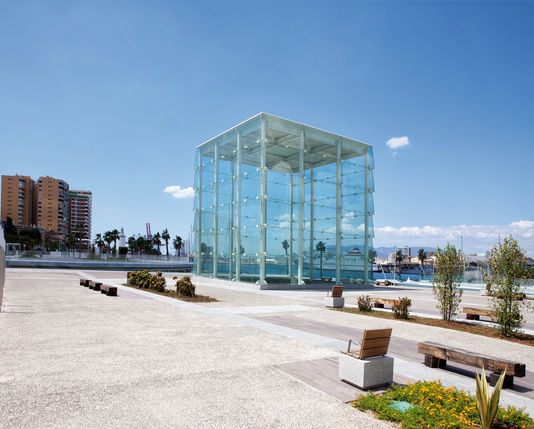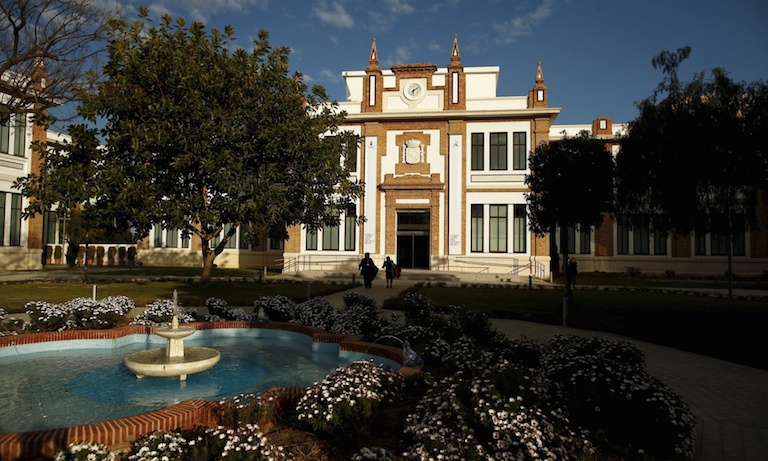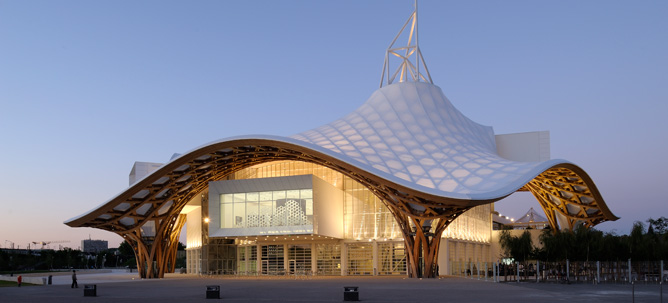
The Centre Pompidou, France’s national museum of modern art, has opened a satellite location in Málaga, Spain. It is the museum’s first location outside of France, and it opened in the same week as an outpost of the State Russian Museum in Málaga. Together, the two satellite museums are expected to attract 400,000 visitors to the Andalusian city that has quickly become established as a cultural destination.
Málaga is a coastal city of about 570,000 and is popularly known as the birthplace of Pablo Picasso. The city has about 30 museums including the Museo Picasso, which has a collection of 285 works from the artist’s family, and the Centro de Arte Contemporáneo (CAC), a contemporary kunsthalle museum, which both opened in 2003. The Museo Carmen Thyssen, a private collection of 19th century Spanish paintings that was previously in Madrid’s Museo Thyssen-Bornemisza, opened in 2011.
Francisco de la Torre, Málaga’s mayor since 2000, is credited for much of the city’s cultural expansion. Notwithstanding a debt of €600 million, Málaga has invested €100 million in arts and cultural developments in the past decade. The city has budgeted €4.2 million for the Pompidou this year, including an initial fee of €2.1 million and operational support that will total €5 million over a five-year term. The budget for the Russian museum, which has a ten-year agreement, is €3.7 million, including €500,000 for building renovations and €400,000 for exhibitions.

The Centre Pompidou Málaga is in a retrofitted building known as El Cubo. The harbor-front site was commissioned by the city and designed by the Spanish firm L35 as a commercial and cultural center. The project was completed in 2013, and a €6.7 million renovation converted it into 6,000 square meters of gallery space for the Pompidou with a large cube-shaped skylight as its most recognizable feature.

The State Russian Museum is in a 1927 building that was originally a tobacco factory. Part of the old factory became an automobile museum in 2010, and another 2,300 square meters will host exhibitions loaned from St. Petersburg for the next decade.
The CAC is similarly in a 1939 industrial building that has been repurposed. The Museo Picasso and the Museo Carmen Thyssen are each in palaces that date to the 16th century. Málaga’s new museums in historic buildings are a notable contrast to Bilbao’s Guggenheim.

The Centre Pompidou Málaga is only the most recent development of the museum beyond Paris under initiatives to decentralize the national collections. Under the leadership of Alain Seban, whose term as President ended this month, the Pompidou launched a program of temporary museums to show its collection of more than 100,000 artworks.
The museum opened its first satellite in Metz, about 170 miles east of Paris, in 2010 with a €69 million building designed by Shigeru Ban.
From 2011 to 2013, the Pompidou hosted pop-up museums in six French cities that were attended by more than 275,000 visitors. Libourne, which hosted a pop-up in 2011, and Maubeuge, near the Belgian border, have each submitted proposals for satellite museums. Speculation about additional venues indicates Mexico and Brazil as frontrunners, but it is unknown whether Seban’s successor, Serge Lasvignes, will continue the Pompidou’s expansion concept.